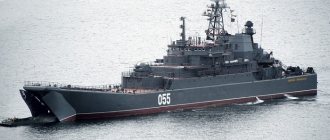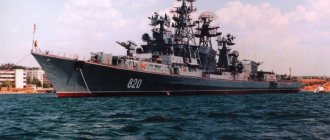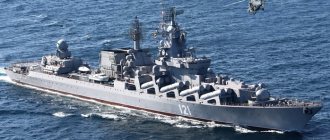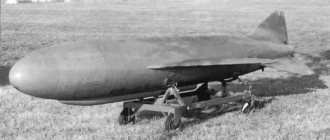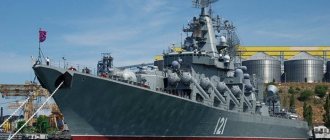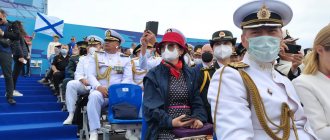Large landing ships Project 1171, code "Tapir"
Quantity
14 + 1 units
Construction
Kaliningrad, Baltic Shipyard "Yantar"
Name
| Factory | Pawned | Launched | Commissioning | Note | |
| Group 1 | |||||
| BDK-10 | №291 | 5.02.1964 | 1.07.1964 | 18.08.1966 | from 02/22/1967 - Voronezh Komsomolets, from 02/15/1992 BDK-65, from 07/26/2003 - Saratov |
| BDK-6 | №292 | 4.07.1964 | 15.02.1965 | 30.12.1966 | from 9.11.1970 - Crimean Komsomolets, from 15.02.1992 - BDK-6 |
| BDK-13 | №293 | 18.02.1965 | 26.03.1966 | 30.09.1967 | from 06/20/1972 - Tomsk Komsomolets, from 02/15/1992 - BDK-25 |
| BDK-62 | №294 | 5.08.1966 | 1.03.1967 | 29.12.1967 | from 09/14/1981 - Komsomolets of Karelia, from 02/15/1992 - BDK-62 |
| Group 2 | |||||
| BDK-66 | №295 | 7.03.1967 | 28.08.1967 | 27.09.1968 | from 02/13/1975 - Sergey Lazo |
| BDK-69 | №296 | 30.08.1967 | 29.02.1968 | 31.12.1968 | from 10.20.2002 - Orsk |
| Group 3 | |||||
| BDK-77 | №297 | 12.03.1968 | 31.08.1969 | 30.09.1969 | from 10/12/1972 - 50 years of Komsomol patronage, from 02/15/1992 - BDK-80 |
| Donetsk miner | №298 | 5.09.1968 | 10.03.1969 | 31.12.1969 | |
| BDK-100 | №299 | 18.03.1969 | 11.10.1969 | 30.09.1970 | from 04/11/1970 - Krasnaya Presnya |
| BDK-104 | №300 | 17.10.1969 | 31.03.1970 | 10.06.1971 | from 05/25/1982 - Ilya Azarov |
| Alexander Tortsev | №301 | 6.04.1970 | 27.11.1970 | 31.12.1971 | |
| Petr Ilyichev | №302 | 30.11.1970 | 30.08.1971 | 29.12.1972 | |
| Group 4 | |||||
| Nikolay Vilkov | №303 | 3.09.1971 | 30.11.1973 | 30.07.1974 | |
| Nikolay Filchenkov | №304 | 30.01.1974 | 29.03.1975 | 30.12.1975 | |
| Nikolay Golubkov | №305 | — | — | — | not completed |
Tactical and technical data
| Displacement, t: | |
| standard: | 2885 |
| complete: | 4946 |
| Dimensions, m: | |
| length: | 113,1 |
| width: | 15,6 |
| draft: | 3,655 |
| Full speed, knots: | 17,3 |
| Cruising range: | 6312 miles (17.3 kts), 7654 miles (16.3 kts), 9150 miles (9 kts) |
| Autonomy, days: | 15 days (groups 1, 2), 20 days (groups 3, 4) |
| Power point: | 2x4500 hp, diesel engines 58A (groups 1,2), 58A-3 (group 3), 58A-4 (group 4), 2 fixed pitch propellers, 2 diesel generators DGR-300/500-1 300 kW each (groups 1, 2), 3 DG DGR-300/500-1 300 kW each (groups 3, 4), 1 DG DGR-100/750 (groups 1, 2) |
| Weapons: | 1x2 57 mm ZIF-31B - 1200 rounds 2x2 25 mm 2M-3M (group 4) 2x1 45 mm 21KM (on BDK-13, 62, 66, 100, Alexander Tortsev) 1x40 122 mm PU MS-73 NURS A-215 " Grad-M" (groups 3, 4, except BDK-77) (160 rounds 9M22) - PS-73 "Groza-1171" launcher 3x4 MTU-4S launcher SAM 9K34 "Strela-3" (at Pyotr Ilyichev - 2*4 MTU-4S, not on BDK-66, Komsomolets Karelia) - 24 9M36 missiles (on Petr Ilyichev - 16 missiles) - installed during operation |
| RTV: | 2 "Don" navigation radar, state identification equipment - transponder "Khrom-KM", anti-sabotage OGAS MG-7 "Braslet" |
| Troop capacity: | Groups 1, 2 - 20 medium tanks and 313 people or 47 armored personnel carriers and 313 people or 52 trucks and 313 people, groups 3, 4 - 20 medium tanks and 440 people or 47 armored personnel carriers and 440 people or 52 trucks and 440 people or 1000 tons of cargo |
| Crew, persons: | 77 people (6 officers, 9 midshipmen) |
General form
Large landing ship of project 1171 - General view
Modernization of the project
Nikolay Vilkov is equipped with 2x7 55 mm MRG-1 "Ogonyok" grenade launchers (RG-55 grenades) BDK-13 is equipped with 2x1 45 mm 21KM BDK-10 is equipped with MR-231 "Pal" navigation radar Unrealized modifications: Project 11711E - export version
Distribution by fleet
BF
: BDK-100, Donetsk miner, Pyotr Ilyichev (then
Northern Fleet
)
Black Sea Fleet
: BDK-6, 10, 69, 104, Nikolay Filchenkov
Northern Fleet
: BDK-62
Pacific Fleet
: BDK-13, 66, 77, Alexander Tortsev, Nikolay Vilkov
Side numbers
BDK-6: 080, 449?(1968), 438, 445, 442(1970), 414(1972), 441(1972?), 403(1974), 407(1975), 412, 139(1980), 146 (1982), 141(1983), 149, 151(1984), 136, 142, 144(1991) BDK-10: 9(1966), 447(1968), 419(1972), 442, 405(1974?) , 431, 435(1974), 136, 139(1982), 142(1985), 150(1990) BDK-13: 507(1966), 361(1968), 341(1971), 398(1973), 353( 1975), 384(1977), 072(1978), 076(05.1981), 068(1984), 055(1987), 093(05.1990), 072(05.1993) BDK-62: 484(1969), 454(1969) , 455(1973), 453(1975), 463(1977), 015, 037(Komsomolets of Karelia), 042(1981), 027(1986), 030(1987), 023(1993) BDK-66: 558(1968 ?), 424(1969), 362(1970), 342(1972), 344(1972), 356(1975), 387, 065(1978), 058(1981), 085(1988), 078(05.1990), 087(05.1993) BDK-69: 515(1968), 421(1968), 438, 415(1971), 411(1971), 424, 405(1974), 412(1974), 400(1976), 413(1977 ), 410(1978), 142(1980), 141(1982), 144, 146, 150(1988), 148(1997) BDK-77: 564(1972), 363, 343(1972), 355(1974) , 397(1975), 386(1977), 083(1978), 079(1981), 092(1986), 099(1989), 062(05.1990), 075(05.1993) BDK-100: 533(1970), 570 , 527(1973), 573?(1973), 562, 550(1975), 521(1976), 511(1977), 110(1979), 115(1982), 111(1985), 120(1986), 115 (1993) BDK-104: 565(1971), 401(1974), 431(1975), 412(1976), 428, 406(1977), 435(1978), 146(1979), 144(1981), 142 (1982), 139(1984), 148(1986), 146(1990) Alexander Tortsev: 558(09.1972), 546, 399(1974), 354(1975), 385(1977), 055(1978), 052( 1982), 062(1987), 099(05.1990), 097(05.1993) Donetsk miner: 555(1970), 505(1971), 500(1971), 546, 540(1975), 520(1976), 523, 428 , 107(1979), 100(1980), 120(1982), 106(1984), 114(1985), 119(1991) Nikolay Vilkov: 500, 554, 357(1974), 388, 022, 053(1977) , 075(1980), 078(1981), 066(1984), 070(1987), 068(1990), 089(1992), 081(1993) Nikolay Filchenkov: 560(1975), 409(1976), 417, 141(1980), 136(1982), 143, 146(1985), 142(1988), 152(1991) Pyotr Ilyichev: 473(1975), 451(1976), 491(1977), 144(1981), 047 (1983), 029(1984), 015, 012(1988), 044(1990)
Write-off
1992 – BDK-6 (19.03, bulk carrier Sozh, in 1995 thrown ashore by a storm, dismantled for metal) 1993 – BDK-100 (30.06, bulk carrier, sank in 1995 while towing in a storm in the North Sea), Pyotr Ilyichev (30.06) 1994 – BDK-13 (5.07), BDK-66 (5.07), BDK-77 (5.07), Alexander Tortsev (5.07) 1997 – BDK-62 (1.12) 2002 – Donetsk miner (10.04)
Export
Ukraine: 1 unit Rivne U401 (until 01/10/1996 BDK-104). In 1997, converted into U762 transport - all weapons were removed, 1 Don navigation radar, 55 people (4 officers). Since 2004 bulk carrier
Project history
The creation of 11711 Nevsky Design Bureau was undertaken. The first ship to receive the name "Ivan Gren". was laid down in December 2004 in Kaliningrad. In 2008, it was expected to be transferred to the fleet, but construction was frozen due to financing problems. As a result, only some sections were assembled over these four years. But in the same year, the construction process became more intensive, and as a result, four years later, the large landing craft was launched. In 2010, the plant signed a contract for the construction of the second ship of this project.
Place of the Ivan Gren-class landing craft in the Russian Navy
The process and result of the work to create this project is an example of an ill-considered approach to fleet construction. There was a simple replenishment of obsolete ships with slightly modernized analogues.
Obviously, the need to operate in the Ocean zone requires a qualitative increase in the combat capabilities of the fleet. Half measures in the form of a large landing ship “Ivan Gren” or a “mosquito” fleet with “Caliber” missiles are a waste of money. A promising direction, for example, could be the construction of universal landing ships of the Priboy project.
Armament
Unlike its predecessors, the Project 11711 BDK has only anti-aircraft artillery systems (ZAK). These include the ZAK AK-630M-2 “Duet” in the forward part of the superstructure and two AK-630M in the aft part of the helicopter hangar. Their main purpose is to combat enemy anti-ship missiles.
Both complexes are based on an automatic six-barreled 30 mm AO-18 cannon.
It provides a firing range at air targets of up to 4000 m and a rate of fire of up to 5000 rounds per minute.
ZAK AK-630M-2 “Duet” is a dual-automatic unit with the ability to use one or two automatic weapons simultaneously. Its rate of fire reaches 10 thousand high/min. Firing control is carried out by the Vympel-AM2 system according to data from the MR-123AM2 radar.
The KM-11-1 laser target designator can also be used in conjunction with the LDM-1 “Cruiser” rangefinder.
Design
Project 1171 became the basis for the new large landing ships, for the reason that it showed excellent performance during service in the navies of the USSR and the Russian Federation. During development, the design underwent major changes. They most affected the interior and superstructure. During construction, the latest generation technologies are used; visibility has been especially reduced, thanks to technical solutions and modern materials.
In addition, the developers thought about the living conditions of the paratroopers and crew.
It is possible to load equipment onto a ship in the following ways: using deck or portal cranes through a four-leaf cargo hatch in the upper deck or independently using ramps. Four-leaf cargo hatches also allow for ventilation of the below-deck space in cases where the engines of the vehicles are idling before exiting and because of this the troop compartment is filled with exhaust gases. The ship has two boat cranes for working with motor boats (there are three of them on the BDK - one small and two large) and boats, as well as a cargo crane with a lifting capacity of sixteen tons, allowing for loading and unloading operations.
Composition of the series
| Name | Pawned | Drain the water | Commissioning | Current status | |
| Ivan Rogov | 101 | 09.1973 | 31.05.1977 | 15.06.1978 | Decommissioned in 1996. Dismantled for metal in the Dalzavod dry dock in 2004. |
| Alexander Nikolaev | 102 | 03.1976 | autumn 1982 | 30.12.1982 | Since 1997 in reserve. The issue of restoration and return to the combat ranks of the Navy is being worked out. |
| Mitrofan Moskalenko | 103 | 05.1984 | 1988 | 23.09.1990 | Since 2002, in reserve. As of May 5, 2014, it was put up for sale, probably in a condition that precludes its use for its intended purpose. The issue of restoration and return to the Navy’s combat ranks is being considered. |
Analogs
- Вuque de Аpoyo Logistico (BAL)
- “transport support ships”, actually tank landing ships, created on the basis of the American LST-542 tank landing ships of the Second World War. Since 2011, 2 units were built and became part of the Mexican Navy. With a displacement of 3666 tons, a speed of 12 knots, they have the following weapons: 5 - 40 mm Bofors L/70. - Magar class landing ships (English)Russian.
— Magar-class tank landing ships were created on the basis of the Sir Lancelot-class landing ship of the British Navy.
Since 1987, 2 units were built and became part of the Indian Navy. With a displacement of 5665 tons, a speed of 15 knots, they have the following weapons: 2 x 122 mm MLRS, 4 - 40 mm Bofors. For amphibious landings, it is equipped with 4 LCVP
(located on the sides on davits), a hangar for 1 helicopter (runway on 2 vert.). The crew consists of 20 officers and 235 sailors. - Landing ships of the Shardul class (English)Russian.
— Shardul-class tank landing ships are a further development of Magar-class landing ships. The changes affected the improvement of crew habitability, seaworthiness, and also decreased operating cost. In 2002-2009, 3 units were built and became part of the Indian Navy. With a displacement of 5650 tons, a speed of 15.8 knots, they have the following weapons: 2 x 140-mm MLRS "WM-18", 4 - 30-mm CRN-91 AA, MANPADS. For amphibious landings, it is equipped with 4 LCVP landing craft (located on the sides on davits), a hangar for 1 helicopter (runway for 2 helicopters). The ships can also be used as hospitals or tankers. The crew consists of 11 officers and 145 sailors. - Landing ships of the Type 072III class (English)Russian.
— tank landing ships of the Type 072-III type (Yuting-II class) are the modern main type of large landing craft in the Chinese Navy. In 2003-2005, 10 units were built and put into operation. With a displacement of 3430 tons, a speed of 18 knots, they have the following weapons: 1 - 37-mm type “76F” AAA, MANPADS. Equipped with a runway for 1 helicopter. (no hangar provided). - Jason class landing ships (English)Russian.
- Jason-class tank landing ships are the main landing ships of the Greek Navy. In 1986-2000, 5 units were built and put into operation. With a displacement of 4470 tons, a speed of 16 knots, they have the following weapons: 1 - 76-mm "Oto Melara" gun, 2 - 40-mm "Breda" gun, 4 - 20-mm "Rheinmetall" gun. Equipped with 4 LCVP landing craft and a 1-vert runway. (no hangar provided).
Composition of the series
Onboard projection of the ships of the basic project 11711 (BDK “Ivan Gren” and “Pyotr Morgunov”).
A total of 6 ships were planned in the series; later this number was reduced to two. However, in 2022, a decision is made to lay down two more large landing ships.
Military experts explain the delays with the second BDK of Project 11711 by the fact that the decision to build the series will be made only after testing the lead ship. Before starting production, the entire complex must be tested in order to understand what changes and additions need to be made to the project. The tests will take about a year.
On April 23, 2022, during the laying of the 3rd and 4th large landing ships of project 11711 “Vladimir Andreev” and “Vasily Trushin”, President of the United Shipbuilding Corporation Alexey Rakhmanov announced that their construction would be carried out according to a modified project. In particular, the ships' displacement will be increased to 7-8 thousand tons. They will also differ from the base project in terms of the add-on, and in addition, other changes will be made. The project code will not be adjusted in this case.
| Name | Pawned | Launching | Commissioning | Fleet | State | ||
| Basic project 11711 | |||||||
| "Ivan Gren" | 01301 | 135 | 23.12.2004 | 18.05.2012 | 20.06.2018 | SF | In service. |
| "Peter Morgunov" | 01302 | 117 | 11.06.2015 | 25.05.2018 | 12.2019 | BF or Black Sea Fleet | Factory sea trials |
| Modified project 11711 | |||||||
| "Vladimir Andreev" | 01303 | 23.04.2019 | 2022 | 12.2023 | Pacific Fleet | Under construction | |
| "Vasily Trushin" | 01304 | 23.04.2019 | 2023 | 12.2024 | Pacific Fleet | Under construction |

